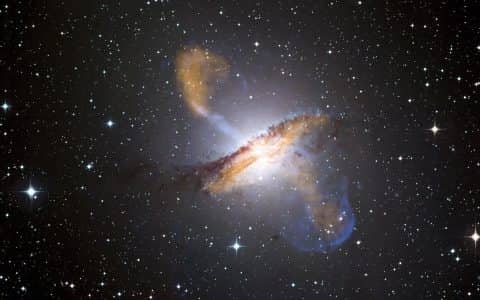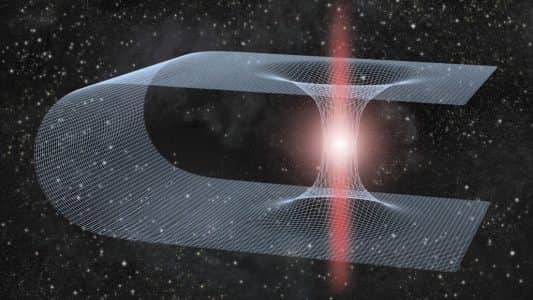Dark Matter Could be Linked to Primordial Black Holes - Dispatch Weekly
June 15, 2016 - Reading time: 4 minutes

Science hasn’t been able to explain dark matter and as researchers continue to probe the cosmos for answers and push their intelligence and research acumen to the limits to find answers to this illusive matter, a new study establishes a possible link between dark matter and primordial black holes.
According to Alexander Kashlinsky, an astrophysicist at NASA Goddard dark matter is made of black holes formed during the first second of our universe’s existence, known as primordial black holes and this could explain why there have been unexpectedly high masses of merging black holes detected last year.
The study has its roots in the year 2005 when Kashlinsky along with a team of astronomers used NASA’s Spitzer Space Telescope to explore the background glow of infrared light in one part of the sky. After extensive study they revealed in their findings excessive patchiness in the glow and came to a conclusion that this patchiness was possibly a result of the aggregate light of the first sources to illuminate the universe more than 13 billion years ago. Subsequent studies have confirmed that this cosmic infrared background (CIB) showed similar unexpected structure in other parts of the sky.
A couple of years back in 2013, another study looked at the cosmic X-ray background (CXB) detected by NASA’s Chandra X-ray Observatory and compared it to the CIB in the same area of the sky. Because the first stars emitted mainly optical and ultraviolet light, which today is stretched into the infrared by the expansion of space, scientists say they should not contribute significantly to the CXB. Yet the irregular glow of low-energy X-rays in the CXB matched the patchiness of the CIB quite well. The only object we know of that can be sufficiently luminous across this wide an energy range is a black hole. The research team concluded that primordial black holes must have been abundant among the earliest stars, making up at least about one out of every five of the sources contributing to the CIB.
“These studies are providing increasingly sensitive results, slowly shrinking the box of parameters where dark matter particles can hide,” Kashlinsky said. “The failure to find them has led to renewed interest in studying how well primordial black holes — black holes formed in the universe’s first fraction of a second — could work as dark matter.”
In his new paper, published May 24 in The Astrophysical Journal Letters, Kashlinsky analyzes what might have happened if dark matter consisted of a population of black holes similar to those detected by LIGO. The black holes distort the distribution of mass in the early universe, adding a small fluctuation that has consequences hundreds of millions of years later, when the first stars begin to form.
For much of the universe’s first 500 million years, normal matter remained too hot to coalesce into the first stars. Dark matter was unaffected by the high temperature because, whatever its nature, it primarily interacts through gravity. Aggregating by mutual attraction, dark matter first collapsed into clumps called minihaloes, which provided a gravitational seed enabling normal matter to accumulate. Hot gas collapsed toward the minihaloes, resulting in pockets of gas dense enough to further collapse on their own into the first stars. Kashlinsky shows that if black holes play the part of dark matter, this process occurs more rapidly and easily produces the lumpiness of the CIB detected in Spitzer data even if only a small fraction of minihaloes manage to produce stars.
As cosmic gas fell into the minihaloes, their constituent black holes would naturally capture some of it too. Matter falling toward a black hole heats up and ultimately produces X-rays. Together, infrared light from the first stars and X-rays from gas falling into dark matter black holes can account for the observed agreement between the patchiness of the CIB and the CXB.

DW Staff
David Lintott is the Editor-in-Chief, leading our team of talented freelance journalists. He specializes in covering culture, sport, and society. Originally from the decaying seaside town of Eastbourne, he attributes his insightful world-weariness to his roots in this unique setting.

_1.jpg)


